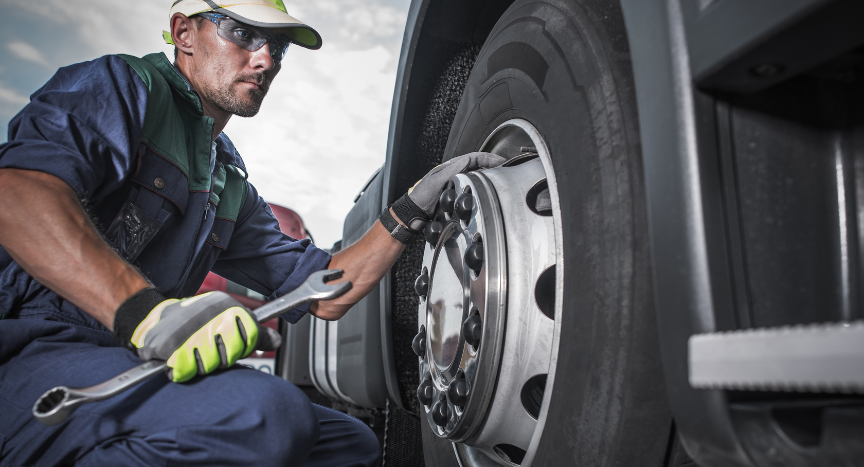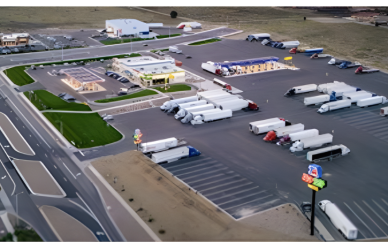For professional truckers, a rig isn’t just a vehicle—it’s your livelihood, your business, and your ticket to staying on the road. Keeping it in peak condition goes beyond avoiding fines; it’s about ensuring safety, cutting down on costly repairs, and staying on track with your schedule. Preventative maintenance (PM) is the key to sidestepping breakdowns and expensive fixes while protecting your career and peace of mind.
Why Preventative Maintenance Matters
Preventative maintenance means staying ahead of potential problems by conducting regular inspections, servicing, and minor repairs. It’s about checking oil, rotating tires, inspecting brakes, and keeping fluids at the right levels. Unlike reactive maintenance—which addresses issues after something breaks—PM is all about prevention, tackling trouble before it derails your day (and your budget).
The Real Cost of Neglecting Truck Maintenance
Skipping regular maintenance might seem like a time-saver, but the risks can be steep:
- Unexpected Breakdowns The American Transportation Research Institute (ATRI) notes that breakdowns can cost truckers up to $1,000 per day in lost revenue.
- Skyrocketing Repair Bills Small issues can snowball into costly ones—think an unchecked coolant leak leading to catastrophic engine failure.
- Safety Risks Poor maintenance ups the chances of dangerous incidents like brake failures, tire blowouts, and steering issues, putting you and others at risk.
- Compliance Fines The Federal Motor Carrier Safety Administration (FMCSA) mandates routine inspections and upkeep. Failure to comply could result in fines, downtime, or even removal from service.
Essentials of a Strong Preventative Maintenance Plan
To keep your truck running smoothly, prioritize these critical areas:
- Daily and Deep Inspections
- Perform pre-trip and post-trip checks for visible issues, like worn tires and fluid leaks.
- Include periodic deeper inspections to assess components like hoses, belts, and the electrical system.
- Oil & Fluids
- Stick to manufacturer-recommended oil changes (every 25,000–50,000 miles, depending on conditions).
- Regularly check and refill coolant, transmission, and brake fluids to keep systems operating smoothly.
- Tires
- Keep tire pressure at optimal levels for better fuel efficiency and reduced wear.
- Regularly rotate them and check for damage or uneven patterns.
- Brakes
- Inspect pads, rotors, and drums frequently for early signs of wear.
- Make sure air brake systems are leak-free and working as they should.
- Electrical Systems
- Test your truck’s battery and charging systems to avoid power interruptions.
- Check that all warning signals and lights are fully functional.
- Seasonal Prep
- Winterize your rig by using anti-gel additives and engine heaters.
- Check cooling systems and AC performance before summer hits.
Why Your Effort Pays Off
Proactive maintenance isn’t just good for your truck; it’s good for your bottom line. Here’s why staying consistent with PM is worth it:
- Minimizes unexpected downtime, letting you stay on track.
- Prevents small issues from escalating into sky-high repair costs.
- Improves fuel efficiency with well-maintained engines and properly inflated tires.
- Enhances driver safety with dependable brakes, tires, and lights.
- Extends your truck’s life span, delaying the need to replace expensive equipment.
Making Preventative Maintenance Work for You
Stick to a Maintenance Plan
- Use apps or logs to schedule upkeep consistently.
- Follow manufacturer PM intervals (typically every 15,000–30,000 miles).
Collaborate with a Trusted Mechanic
- Partner with skilled technicians who know commercial vehicles inside and out.
Leverage Telematics
- Modern telematics systems track performance and send real-time maintenance alerts.
Educate Yourself on the Basics
- Learn simple fixes like checking fluids, replacing fuses, or tightening loose cables—it could save you time and money on the road.
Preventative maintenance isn’t just about keeping your vehicle running; it’s about protecting your livelihood, saving money, and staying safe. By adopting a regular PM schedule, whether you’re an independent owner-operator or part of a larger fleet, you’re making an investment in your future success.











